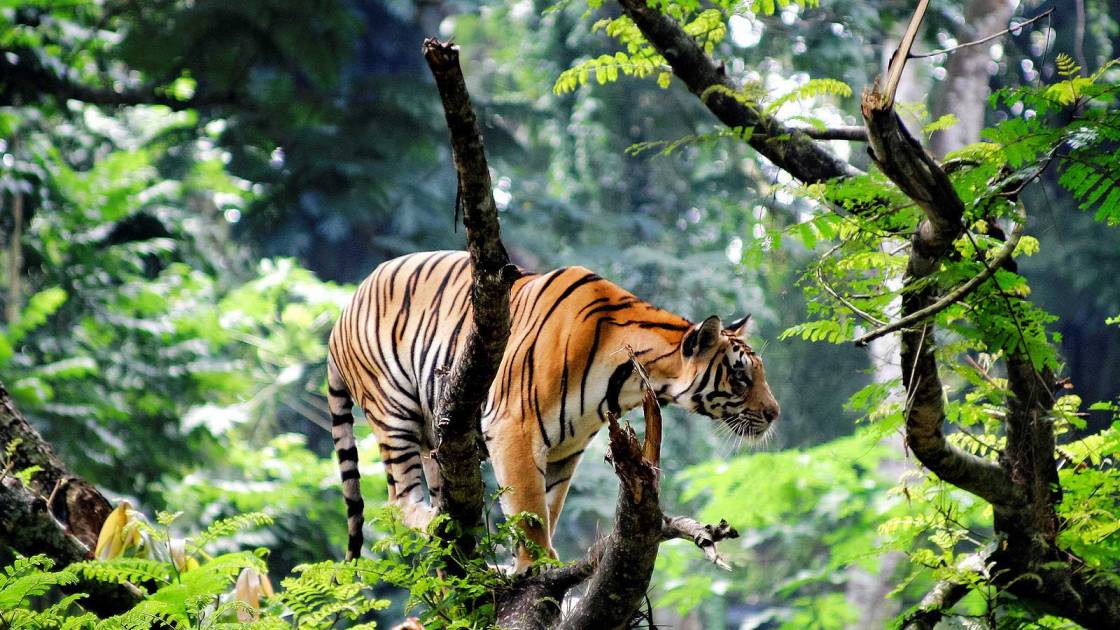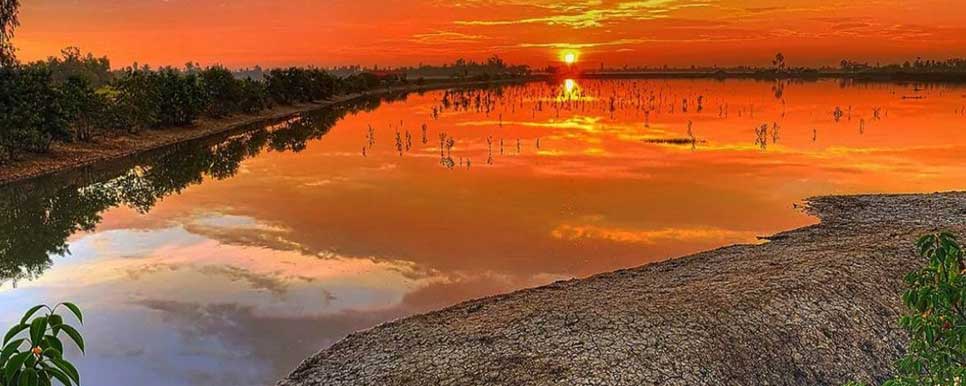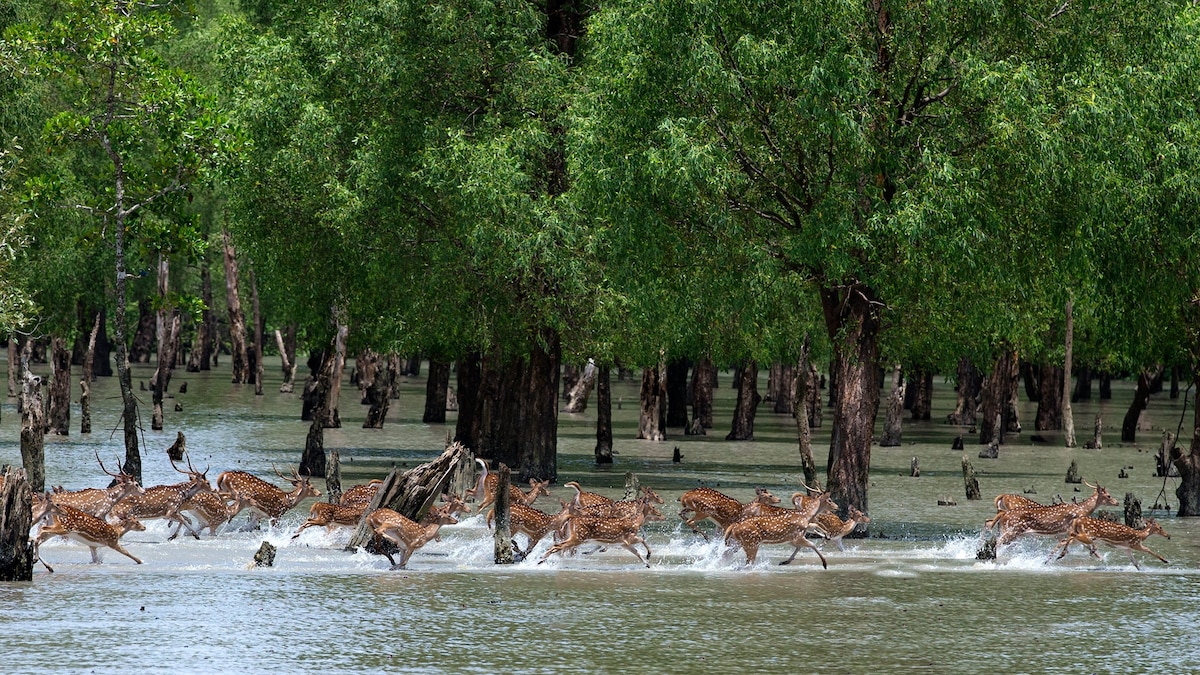Weather Conditions in Sundarbans: The Sundarbans, one of the largest mangrove forests in the world, is a haven for wildlife enthusiasts, nature lovers, and adventure seekers. Spanning parts of both India and Bangladesh, the Sundarbans are famous for their rich biodiversity, including the majestic Royal Bengal Tiger, estuarine crocodiles, and over 260 bird species. However, before setting out on a journey to explore this mesmerizing natural wonder, it’s crucial to understand the weather conditions that play a significant role in shaping the landscape and the overall experience of a trip to the Sundarbans. Let’s dive deeper into Weather Conditions in Sundarbans. Also, you can Book the Sundarban Tour At Maity Tourism and Sundarban Leisure Tourism Powered By Argusdna.

Read More
| Guided Tours vs. Self-Exploration |
| Medical Facilities in Sundarbans |
| Photography Tips for Sundarban Tours |
| Cultural Experiences in Sundarbans |
From tropical monsoons to dry winters, the Sundarbans experience a wide range of weather patterns throughout the year. This blog will provide an in-depth look into the various weather conditions in the Sundarbans, helping you plan your trip based on the season that best suits your preferences.
1. The Seasons of Sundarbans: A Brief Overview
The Sundarbans experience three main seasons: summer, monsoon, and winter. Each season brings its unique charm and challenges, making it important to understand what to expect during your visit.
- Summer (March to June): Hot and humid, with temperatures rising above 35°C (95°F) at times.
- Monsoon (June to September): Heavy rainfall and high humidity, with an increased risk of flooding and cyclones.
- Winter (October to February): Pleasant and cool, with temperatures ranging from 10°C to 25°C (50°F to 77°F), making it the most popular time to visit.
Now, let’s explore these seasons in detail to help you plan your Sundarban adventure.
2. Summer in the Sundarbans (March to June)
The summer season in the Sundarbans is characterized by hot and humid weather. Starting in March and lasting until June, this season sees temperatures soaring, with highs often reaching 35°C (95°F) or more. The humidity during these months can be quite oppressive, making it uncomfortable for many tourists. However, the summer also brings certain advantages for wildlife enthusiasts and photographers.
Weather Conditions:
- Temperature: 30°C to 40°C (86°F to 104°F).
- Humidity: Extremely high, often exceeding 80%.
- Rainfall: Minimal rainfall during March and April, but pre-monsoon showers may occur in May and June.
Wildlife Activity: Summer is a good time for wildlife sightings as animals, including the elusive Royal Bengal Tiger, tend to come out in search of water. The creeks and rivers are often at their lowest during this time, making it easier to spot wildlife congregating near water sources.
Challenges:
- The heat and humidity can be physically exhausting for tourists.
- Limited shade and exposure to direct sunlight can make outdoor activities uncomfortable.
- Dehydration and sunburn are common concerns, making it essential to stay hydrated and wear protective clothing.
Travel Tips for Summer in Sundarbans:
- Clothing: Light, breathable fabrics like cotton, and a wide-brimmed hat to protect against the sun.
- Hydration: Carry plenty of water to stay hydrated throughout your trip.
- Wildlife Watching: Early mornings and late evenings are the best times to spot wildlife, as animals are more active during the cooler parts of the day.
While summer can be challenging due to the heat, it also offers some unique opportunities for wildlife enthusiasts. With fewer tourists around, you may have a more exclusive experience, especially when exploring the quieter parts of the Sundarbans. We can explore further details regarding Weather Conditions in Sundarbans.
3. Monsoon in the Sundarbans (June to September)
The monsoon season in the Sundarbans is both awe-inspiring and daunting. From June to September, the region receives heavy rainfall due to the south-west monsoon winds. This results in swollen rivers, lush green landscapes, and a surge in wildlife activity. However, the monsoon also brings the risk of flooding and cyclones, which can disrupt travel plans. We can go into more detail on Weather Conditions in Sundarbans
Weather Conditions:
- Temperature: 25°C to 32°C (77°F to 90°F).
- Rainfall: Heavy rainfall, with an average of 2000-3000mm (80-120 inches) during the season.
- Humidity: Very high, often reaching 90% or more.
Wildlife Activity: The monsoon season breathes new life into the Sundarbans. The forests become lush and green, and the increased water levels create new channels and creeks for exploration. While spotting animals may be more challenging due to the dense foliage, birdwatchers will be delighted by the arrival of migratory birds.

Challenges:
- The heavy rains can cause flooding in many parts of the Sundarbans, making certain areas inaccessible.
- Cyclones are a major concern during the monsoon season. The region has a history of severe cyclonic storms, and travellers should be aware of potential weather hazards.
- Insect activity, especially mosquitoes, is high during the monsoon, increasing the risk of diseases like malaria or dengue.
Travel Tips for Monsoon in Sundarbans:
- Clothing: Waterproof clothing and sturdy boots for muddy terrains.
- Health Precautions: Use insect repellent and sleep under a mosquito net to avoid bites.
- Cyclone Awareness: Keep an eye on weather forecasts and be prepared to modify your travel plans in case of a cyclone warning.
The monsoon season in the Sundarbans is ideal for nature lovers who want to see the forest at its most vibrant. However, it is also the riskiest time to visit due to weather-related disruptions. If you’re willing to brave the rains, you’ll be rewarded with stunning landscapes and a deeper connection to the raw, untamed beauty of the Sundarbans.

4. Winter in the Sundarbans (October to February)
Winter is the most popular time to visit the Sundarbans, thanks to its pleasant weather and clear skies. From October to February, the region experiences cool temperatures and lower humidity, making it the ideal season for exploring the mangrove forests and wildlife sanctuaries. The comfortable weather conditions during winter attract thousands of tourists, both domestic and international.
Weather Conditions:
- Temperature: 10°C to 25°C (50°F to 77°F).
- Rainfall: Minimal to none, with clear skies dominating the season.
- Humidity: Lower compared to summer and monsoon, making outdoor activities more enjoyable.
Wildlife Activity: Winter is the best season for wildlife sightings in the Sundarbans. As the rivers and creeks are at their most navigable, boat tours become more enjoyable, and the cooler temperatures encourage more wildlife activity. The Royal Bengal Tiger, crocodiles, spotted deer, and various bird species are often spotted during this season.

Challenges:
- Winter is the peak tourist season, which means popular areas can get crowded.
- Accommodations and boat tours should be booked in advance to avoid disappointment.
Travel Tips for Winter in Sundarbans:
- Clothing: Light layers for daytime, with warmer clothing for early mornings and evenings, as temperatures can dip.
- Booking in Advance: As winter is the peak season, plan your trip well in advance to secure your preferred accommodations and tour packages.
- Wildlife Watching: Early mornings and late afternoons are the best times to spot wildlife, as animals tend to be more active during these cooler hours.
Winter in the Sundarbans offers the best of everything – comfortable weather, ample wildlife sightings, and a more relaxed atmosphere for travellers. Whether you’re cruising through the creeks or walking through the dense mangrove forests, winter provides the perfect backdrop for an unforgettable Sundarban adventure.
5. Cyclones in the Sundarbans: A Special Mention
The Sundarbans, being a coastal region, are vulnerable to cyclones, particularly during the monsoon season (June to September) and sometimes extending into the early winter months (October to November). The Bay of Bengal, where the Sundarbans is located, is notorious for producing cyclonic storms, some of which can be devastating.
Read More:
| Sundarban Wildlife |
| Boat Safari in Sundarbans |
| Accommodation in Sundarbans |
| Bird Watching in Sundarbans |
| Tiger Spotting in Sundarbans |
In recent years, the frequency of cyclones has increased due to climate change, which has led to more intense storms affecting the region. Cyclones like “Aila” in 2009 and “Amphan” in 2020 have caused significant damage to both the environment and local communities.

How to Prepare for a Trip During Cyclone Season:
- Stay Updated: Keep track of weather forecasts and local advisories. Cyclones often come with warnings days in advance, so you can adjust your travel plans if necessary.
- Emergency Preparedness: Know the location of cyclone shelters and have a plan in case of an emergency.
- Insurance: Consider travel insurance that covers trip cancellations due to weather-related events.
If you’re travelling to the Sundarbans during the monsoon or early winter, it’s essential to be aware of the cyclone risk and plan accordingly. While the likelihood of encountering a cyclone is relatively low, it’s better to be prepared for any eventuality.

Conclusion: Weather Conditions in Sundarbans
The Sundarbans offer something unique in every season, whether it’s the vibrant greenery of the monsoon, the clear skies of winter, or the wildlife-rich creeks of summer. When planning your trip, it’s important to consider what kind of experience you’re looking for:

- For wildlife enthusiasts: Winter is the best time, offering the most comfortable weather and the highest chances of spotting animals.
- For adventure seekers: The monsoon brings a dramatic transformation to the landscape, making it ideal for those who want to experience the raw beauty of nature.
